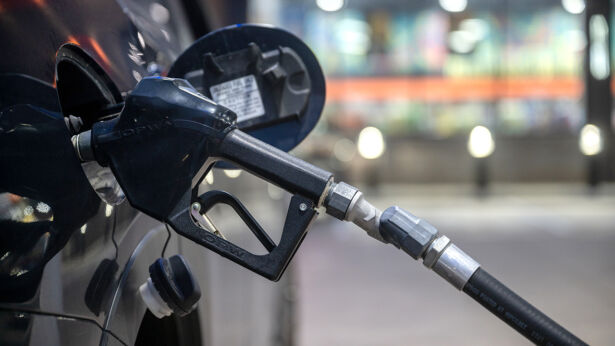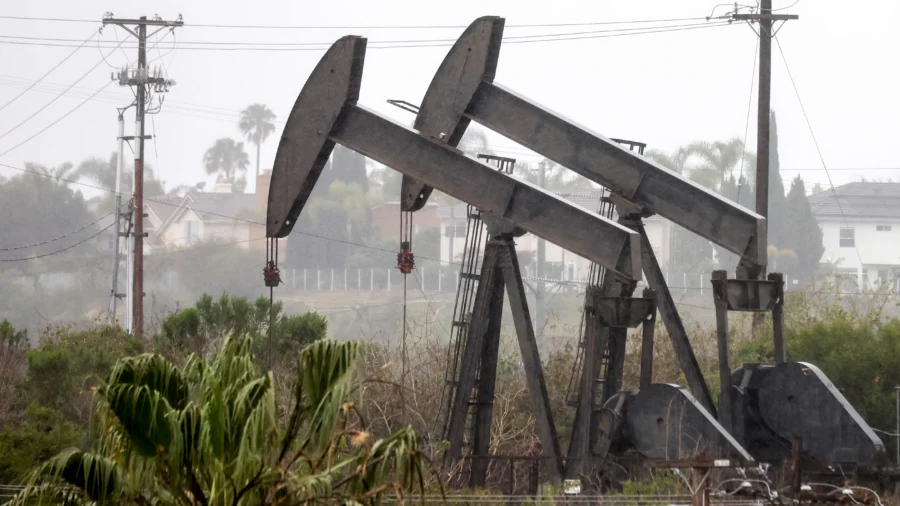The United States is producing record amounts of crude oil today, exceeding pre-pandemic levels, despite President Joe Biden’s promise in 2020 to “end fossil fuel.”
Since the beginning of October, domestic crude output has accelerated and reached as high as 13.3 million barrels per day (bpd), according to the Energy Information Administration (EIA).
In March 2020, U.S. production levels had totaled 13.1 million bpd. After collapsing to as low as 9.7 million bpd in February 2021, it has been a slow upward climb, with volumes stalling at around 12 million bpd from June 2022 to August 2023.
However, due to stellar shale oil drilling activity in Texas and New Mexico’s Permian Basin, output has been strong, allowing the country to ship as much crude oil, refined products, and liquefied natural gas (LNG) as Russia and Saudi Arabia produce.
EIA officials believe domestic crude production will average around 13.1 million bpd this year. This, the EIA noted in the latest Short-Term Energy Outlook (STEO), will support record net exports of 2 million bpd in 2024, up from 1.8 million last year.
This past summer, Enverus Intelligence Research expected that production would accelerate heading into the new year as companies expanded output from wells to avert slowdowns and maximize drilling opportunities.
“The U.S. shale industry has been massively successful, roughly doubling the production out of the average oil well over the last decade, but that trend has slowed in recent years,” said Dane Gregoris, report author and managing director at EIR, in an August statement. “In addition, we’ve observed that declines curves, meaning the rate at which production falls over time, are getting steeper as well density increases. Summed up, the industry’s treadmill is speeding up and this will make production growth more difficult than it was in the past.”
After the latest data measuring active drilling levels in the United States, it is unclear if these output levels are sustainable. For the week ending Jan. 5, the Baker Hughes Oil Rig Count rose by just one to 501. The rig count has steadily declined since December 2022, sliding roughly 20 percent.
More Supply, Lower Prices
The supply trends being witnessed in the domestic energy industry have helped offset some of the disruptive events occurring overseas, particularly the geopolitical upheaval in the Middle East and the Organization of the Petroleum Exporting Countries (OPEC) and its allies, OPEC+, slashing production, and exports.
As a result, energy prices have come down significantly in recent months.
West Texas Intermediate (WTI) crude futures have slumped about 11 percent since October to around $74 per barrel on the New York Mercantile Exchange. But U.S. oil prices have been off to a hot start in 2024, rising nearly 4 percent. The rally has been fueled by fears of a wider conflict in the Middle East as attacks on ships in the Red Sea by Iran-backed Houthi rebels in Yemen could exacerbate tensions.
Meanwhile, the decline in oil prices has also led to a drop in gasoline prices.
According to the American Automobile Association (AAA), the national average price for a gallon of gasoline is $3.09, down 6 percent from the same time a year ago.
“Weak gas demand, alongside increased supply, has pushed pump prices lower,” AAA stated in a report. “However, rising oil prices have limited price decreases. If gas demand remains weak, drivers will likely continue to see pump prices trickle downward.”
But gas demand during the holiday season was higher than in 2022. Compared to the same time a year ago, gasoline consumption is up roughly 6 percent to 7.954 million bpd for the week ending Dec. 29, according to the EIA.
That said, President Joe Biden has pointed out the decline in gasoline prices, writing on X, formerly Twitter, that “the average driver in America is spending over $100 less than if gas prices had stayed at their peak.”
The U.S. Oil & Gas Association responded to President Biden’s post, writing on the social media platform that “you had nothing to do with it.” The response garnered nearly 9 million views and close to 4,000 comments, with many being critical of the organization.

“We touched a nerve. The Leftists have awaken[ed] and are responding many in their own special way,” the group said on X. “You all seem nice. And we know hate us. Yet there your are [sic]—using what we produce every hour of every day in each of your lives. That must be really hard for you.”
The White House estimates that President Biden’s actions shaved about 40 cents per gallon off gas prices.
Refilling Emergency Stocks
After draining 45 percent of the nation’s Strategic Petroleum Reserve, the current administration plans to begin replenishing these emergency stockpiles.
The Department of Energy announced on Dec. 26 that it has finalized contracts to acquire 3 million barrels of crude oil for an average of $77.31 per barrel.
It also confirmed on Jan. 3 that it will buy up to 3 million barrels of sour crude oil for delivery in April.
Since last year’s sales, the administration has purchased approximately 14 million barrels at an average price of $75.63 per barrel. Additionally, the department has hurried the return of close to 4 million barrels that were loaned to energy firms.
But while the White House aims to replenish these emergency supplies, an economist at the Federal Reserve Bank of Dallas questioned if this is necessary.
“An analysis finds that a complete refill of the SPR may be unnecessary depending on policy objectives,” wrote Garrett Golding, a senior business economist at the Dallas Fed Bank. “Instead, the SPR could be recalibrated at a lower absolute level of inventory for the type of supply disruption it was originally intended to mitigate.”
Mr. Golding added that refilling the SPR might not be “as pressing an emergency” as the decrease in absolute volumes suggests.
For now, national commercial inventories are approximately 2 percent below the five-year average for this time of the year, totaling slightly above 431 million barrels.
“Now if you throw in the Strategic Petroleum Reserve the supply deficit is much larger,” said Phil Flynn, an energy strategist at The PRICE Futures Group, in a note.
Last week, domestic supplies of crude oil fell for the second straight week, with a drawdown of 5.503 million barrels, higher than the consensus estimate of negative 3.725 million barrels.
From The Epoch Times


